Composition of Magma
Magma is composed of three main types of materials: liquid rock, solid crystals, and dissolved gases. The liquid portion is made up of molten rock, which can include various minerals such as quartz, feldspar, and mica. The solid crystals are formed as the magma cools and the dissolved gases, such as water vapor, carbon dioxide, and sulfur dioxide, are released during volcanic eruptions.Types of Magma
There are several types of magma, which are classified based on their silica content and viscosity. The two main categories of magma are:- Basaltic Magma: This type of magma has low silica content and is relatively fluid. It often leads to non-explosive eruptions and forms basalt rock when it solidifies.
- Andesitic and Rhyolitic Magma: These types of magma have higher silica content and are more viscous. They can lead to explosive eruptions and form andesite and rhyolite rocks when they solidify.
Formation and Movement of Magma
Magma is formed through the process of partial melting, where rocks in the Earth's mantle and crust are heated to the point of melting. This can occur due to increased temperature, changes in pressure, or the presence of water and other fluids. Once formed, magma can move upwards through the Earth's crust due to its lower density compared to the surrounding rocks. This movement can lead to the formation of magma chambers and eventually volcanic eruptions.Volcanic Eruptions
When magma reaches the Earth's surface, it can lead to a volcanic eruption. The type of eruption is influenced by the composition and viscosity of the magma. Basaltic magma often results in effusive eruptions, where lava flows steadily from the volcano. Andesitic and rhyolitic magmas can lead to explosive eruptions, characterized by the ejection of ash, gases, and volcanic rocks.Study Guide
To study magma effectively, consider focusing on the following key points:- Describe the composition of magma and the role of liquid rock, solid crystals, and dissolved gases.
- Discuss the different types of magma, including basaltic, andesitic, and rhyolitic magma, and their characteristics.
- Explain the formation and movement of magma, including the process of partial melting and the factors that can influence magma generation and movement.
- Explore the relationship between magma composition and volcanic eruptions, including the differences between effusive and explosive eruptions.
[Magma] Related Worksheets and Study Guides:
.◂Science Worksheets and Study Guides Fourth Grade. Ecosystems and changes in ecosystems
Study Guide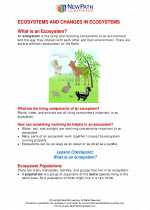 Ecosystems and changes in ecosystems
Ecosystems and changes in ecosystems  Worksheet/Answer key
Worksheet/Answer key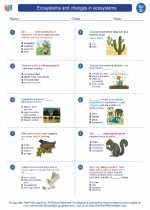 Ecosystems and changes in ecosystems
Ecosystems and changes in ecosystems  Worksheet/Answer key
Worksheet/Answer key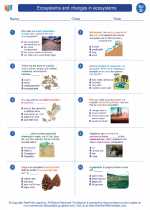 Ecosystems and changes in ecosystems
Ecosystems and changes in ecosystems  Worksheet/Answer key
Worksheet/Answer key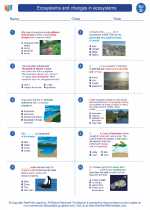 Ecosystems and changes in ecosystems
Ecosystems and changes in ecosystems  Vocabulary/Answer key
Vocabulary/Answer key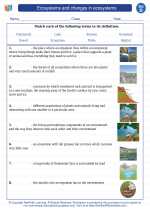 Ecosystems and changes in ecosystems
Ecosystems and changes in ecosystems  Vocabulary/Answer key
Vocabulary/Answer key Ecosystems and changes in ecosystems
Ecosystems and changes in ecosystems  Vocabulary/Answer key
Vocabulary/Answer key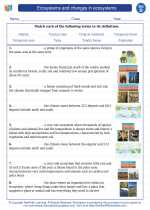 Ecosystems and changes in ecosystems
Ecosystems and changes in ecosystems 

 Worksheet/Answer key
Worksheet/Answer key
 Worksheet/Answer key
Worksheet/Answer key
 Worksheet/Answer key
Worksheet/Answer key
 Vocabulary/Answer key
Vocabulary/Answer key
 Vocabulary/Answer key
Vocabulary/Answer key
 Vocabulary/Answer key
Vocabulary/Answer key

The resources above cover the following skills:
Life Science
There is interaction and interdependence between and among living and nonliving components of ecosystems. Students can:
Identify the components that make a habitat type unique
Compare and contrast different habitat types